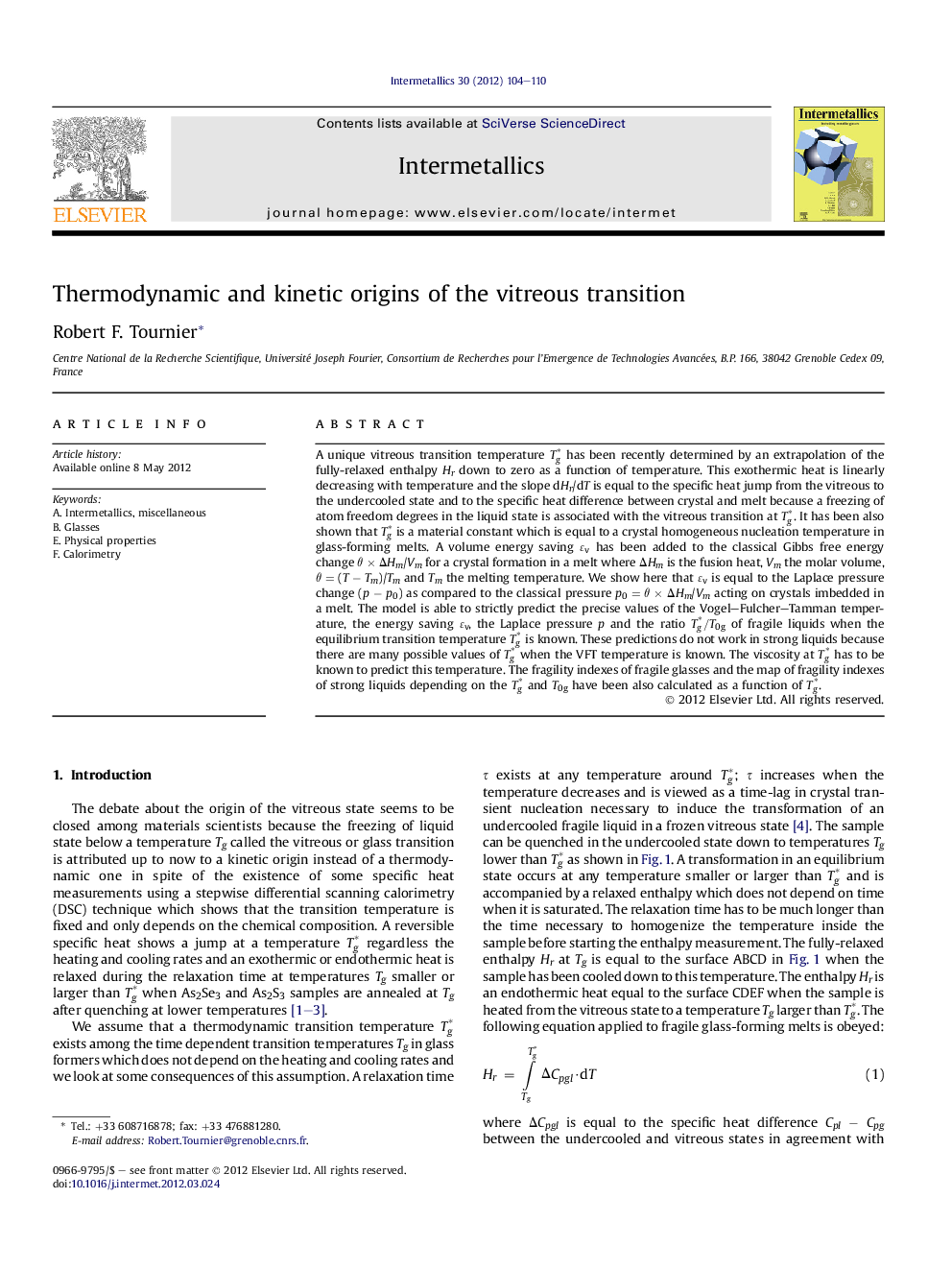| کد مقاله | کد نشریه | سال انتشار | مقاله انگلیسی | نسخه تمام متن |
|---|---|---|---|---|
| 1600410 | 1515881 | 2012 | 7 صفحه PDF | دانلود رایگان |

A unique vitreous transition temperature Tg∗ has been recently determined by an extrapolation of the fully-relaxed enthalpy Hr down to zero as a function of temperature. This exothermic heat is linearly decreasing with temperature and the slope dHr/dT is equal to the specific heat jump from the vitreous to the undercooled state and to the specific heat difference between crystal and melt because a freezing of atom freedom degrees in the liquid state is associated with the vitreous transition at Tg∗. It has been also shown that Tg∗ is a material constant which is equal to a crystal homogeneous nucleation temperature in glass-forming melts. A volume energy saving ɛv has been added to the classical Gibbs free energy change θ × ΔHm/Vm for a crystal formation in a melt where ΔHm is the fusion heat, Vm the molar volume, θ = (T − Tm)/Tm and Tm the melting temperature. We show here that ɛv is equal to the Laplace pressure change (p − p0) as compared to the classical pressure p0 = θ × ΔHm/Vm acting on crystals imbedded in a melt. The model is able to strictly predict the precise values of the Vogel–Fulcher–Tamman temperature, the energy saving ɛv, the Laplace pressure p and the ratio Tg∗/T0g of fragile liquids when the equilibrium transition temperature Tg∗ is known. These predictions do not work in strong liquids because there are many possible values of Tg∗ when the VFT temperature is known. The viscosity at Tg∗ has to be known to predict this temperature. The fragility indexes of fragile glasses and the map of fragility indexes of strong liquids depending on the Tg∗ and T0g have been also calculated as a function of Tg∗.
Journal: Intermetallics - Volume 30, November 2012, Pages 104–110